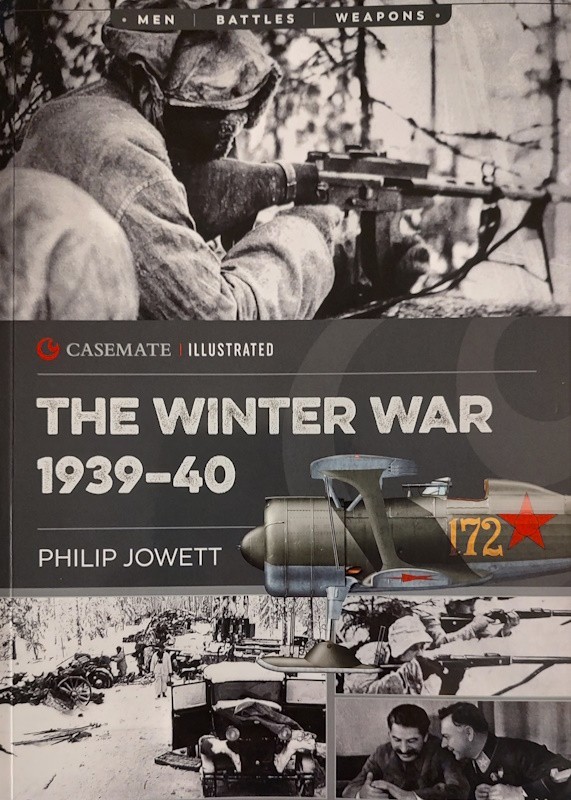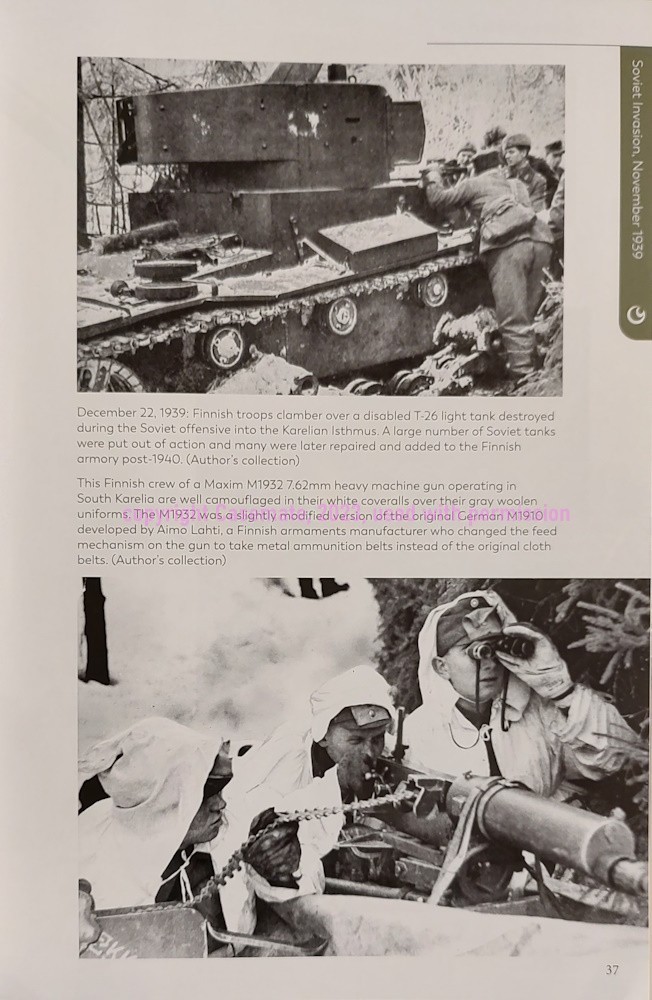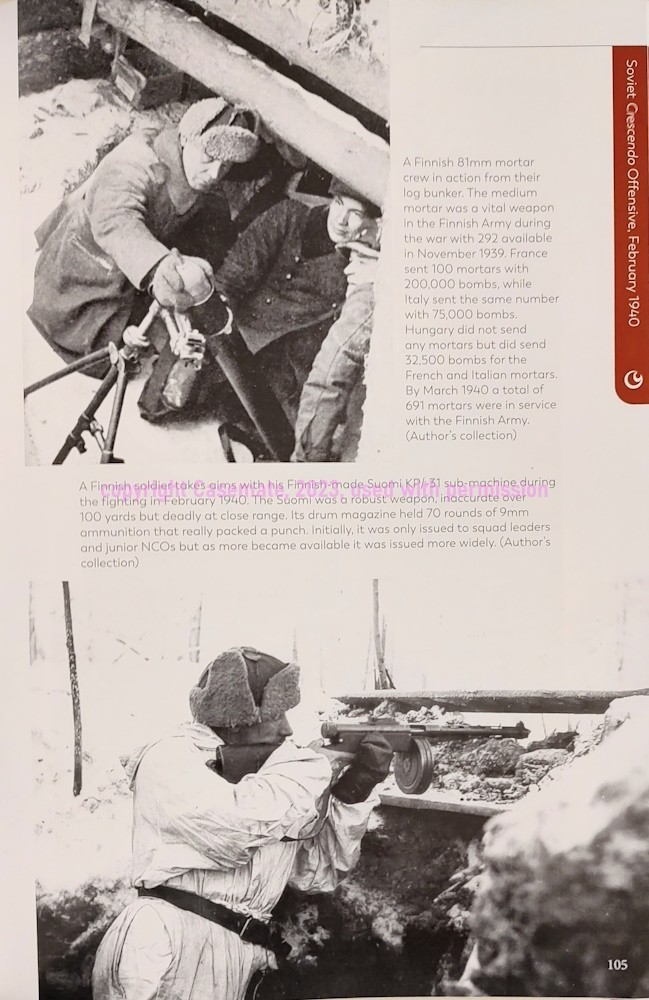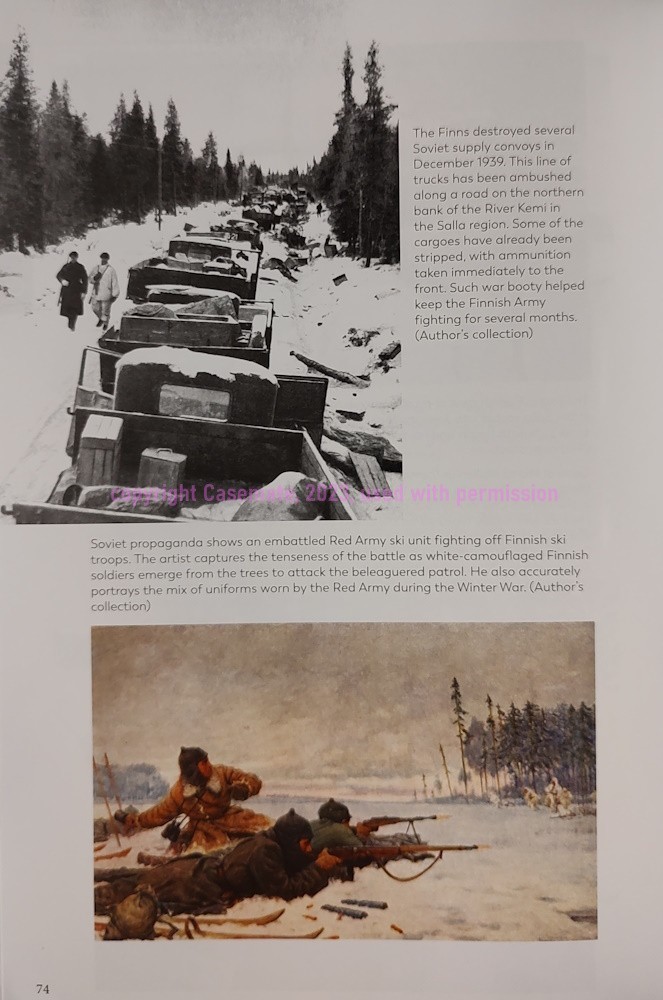
Introduction
The Winter War 1939–40 is part of Casemate Publisher's series Casemate Illustrated. Written by Philip Jowett, this 128-page softback book measures 7 x 10 in, and catalogued with ISBN 9781636242385. Digital downloads have different ISBNs, those formats being Amazon, Apple, Barnes & Noble, Google, and Kobo.
Key features are special artwork, maps and a wealth of photographs. I foresee plenty of source material for modeling subject in addition to the pure historical archive presented in this book.
Did French writer Jean-Baptiste Alphonse Karr see into the future of Russia of the 1930s, 1990s and twenty-first century when he wrote “plus ça change, plus c'est la même chose “ – the more things change, the more they stay the same? In 1939 Finland 's population was 3.7 million. With his friend Hitler watching his back, Stalin attacked Finland with thousands of tanks and aircraft, and 500,000 troops - one soldier for every seven Finnish man, woman and child. Soviet, Finnish and others' estimates from the 1940s to the 90s vary widely. Soviet Premier Khrushchev said that Russia invaded Finland with 1,500,000 soldiers and left a million in Finland. This book shows the Finns killed between 55,000-300,000 soviet troops, destroyed over 1,000 tanks and hundreds of aircraft for a loss of less than 25,000 killed and almost 44,000 wounded.
Finland's incredible defense against the Soviet horde is legendary. While modeling Finland at war is not as extensive as other Second World War subjects, ICM and MiniArt have produced injection-molded 1/35 Finnish infantry and tankers (and reindeer!), and resin or metal soldiers can be found. Tamiya an others have released armored vehicles with Finnish markings. It is easy to find almost every aircraft of the Ilmavoimat (the Finnish Air Force), a popular subject. Finland's defense against Soviet 'Red Fascism' inspired a Europe facing 'Black Fascism' of the Nazis - Stalin's ally - and resulted in Finland receiving military aid aircraft from almost every European country except Germany.
Casemate writes of this book;
When the Soviet Union invaded Finland in late 1939, what transpired was a true “David and Goliath” conflict. When Finland refused a number of Soviet demands, including the ceding of substantial border territories ostensibly to enable the Soviets to protect Leningrad, the Soviets responded by launching an invasion. The invasion involved a large Soviet army, with several thousand tanks, and a large air force.
But to the world's surprise the Finnish Army—many of them reservists without proper uniforms and limited ammunition—and Air Force battled overwhelming odds, and managed to resist Russian attacks for over two months, inflicting serious losses. Geography played its part as much of the Finnish-Soviet border was impassable, meaning that Soviet numerical superiority was of less import. Operating in the winter, with temperatures ranging as low as -43F, the Finns’ determined resistance won them international reputation. Although hostilities finally ended in a peace treaty that saw Finland cede 9% of its territory, Soviet losses had been heavy, and Finland retained its sovereignty.
Let's look at the book.
Content
The Winter War 1939–40 is presented through eight chapters. The chapters in my sample book are different than those on the webpage. The book:
Timeline of Events
Introduction
Buildup to War
Soviet Invasion, November 1939
North of Lake Lagoda, 1939-40
War in the North, 1939-40
War in the Air, 1939-40
Soviet Crescendo Offensive, February 1940
End of the War, March 1940
Epilogue
Further Reading
Index
Content listed on the webpage:
Introduction
Timeline of Events
Finland Under Soviet Threat, 1939
The Soviet Invasion, November 1939
Advance to the Mannerheim Line, December 1939
The Air War 1939–1940
Finnish Guerrilla Warfare, December 1939–March 1940
Battles Along the Mannerheim Line, December 1939
Battles in Lagoda, Kainuu and Lapland, December 1939
Finland’s Defeat, February–March 1940
Afterword
Index
Casemate has an American and a British office and I suspect that is the difference in chapter names. Does that matter to you?
Casemate Illustrated books have a unique feature for the series - each chapter is marked with a colored stripe along the upper corner of each page for easy orientation. This book focuses on kit (uniforms and equipment) and weapons of both sides, i.e., Finnish 15.2cm H/17 howitzer, Finnish use of German M16 helmets. It mentions trivia such as the Finns finding - and improving - thousands of Russian M1891 rifles. Statistics and numerical data is discussed, i.e., Finland had 27 Vickers 6-ton tanks with which to counter hundreds of Russian tanks, including multiturreted T-35s.
Each chapter begins with a concise overview of the subject. Occasional call-out boxes highlight interesting information and orders of battle for specific periods, illustrations of men and vehicles, and descriptions of military formations.
Introduction and Timeline of Events set the stage for the rest of the book by covering Stalin's paranoia and perfidy that manufactured reasons to attack Poland, the Baltic states, and Finland. It recounts Soviet propaganda stating their aggression was to "liberate" those areas from not wanting to be Russian/Soviet, even showing a poster of grateful peasants embracing and kissing their soviet liberators. (Monsieur Karr?) We learn the November 1939 order of battle for the Red Army's 7th, 8th, 9th and 14th Armies' Corps, divisions and Brigades. For Finland, Corps, Divisions and Groups. Finnish commander Marshal Mannheim is introduced with a short biography. Finland's women's auxiliary service - Lotta Svärd - and the Finnish Civil Guard are examined in call-outs.
Further informational call-outs throughout the book are:
- Biography, Soviet General kirill Meretskov
- The Mannerheim Line
- Bio, Finnish Major-General Paavo Talvela
- Bio, Soviet General Grigory Kulik
- Foreign Volunteers for Finland.
The book describes the communist plans to crush the small country, and Finland's plans to prevent it. It introduces the Mannerheim Line compared to the Maginot Line. We learn of notable Finnish soldiers such as former French Foreign Legionnaire , the "Terror of Morocco", captain Aarne Edward Juutilainen, and world ski champion sergeant Pekka Niemi. Niemi served in "suicide squads" operating behind Russian lines, and Juutilainen brought anti-guerrilla experience against the Reds.
Finland fought hard against hopeless odds and the book covers the changing fortunes of the war. Unbelievable as it seems, the Red Army was not ready for winter warfare. We read how they shoved massive forces of unheated mechanized troops into frigid constricted forest tracks. We read how tiny ill-equipped Finland absorbed the Red tidal wave and countered those attacks, annihilating entire divisions. Then we learn how the communists regrouped and ground the Finns down. Even though they eventually asserted their will, Finland was the only country attacked by the Soviets that retained its sovereignty.
Combat was brutal; recounted are episodes such as "The Sausage war," wherein Soviet negligence resulted in their soldiers starving, many stopping to eat sausage from captured field kitchens rather than continue to fight.
Weapons are covered such as the world-class Finnish Suomi KP/-31 sub-machine gun. No mention is made of the Finnish Lahti L-39, a highly effective semi-automatic 20 mm anti-tank rifle, perhaps because only two were available for this war. The Ilmavoimat fought with a riot of aircraft types. One of those fighters is almost universally considered the worst of World War II and yet in Finnish hands, achieved the highest kill-to-loss ratio until the F-15.
The Winter War exposed Soviet Russia and galvanized international opinion against it and for Finland. It also gave a look into the future of the Nazi experience in Russia.
Epilogue offers a page of aforementioned studies of casualties by Russians and Finns over the years. These mentioned dead, wounded, missing, and frostbitten. It includes that the Soviets allowed many to die due to starvation, and negligent medical preparedness.
Photographs, Artwork, Graphics
I will not state that imagery is the primary method of storytelling in Casemate Illustrated books but I think they are half of the story. Scores of photos make up the visual narrative. If there is a page of this book without an image, I missed it. Each photo is explained with captions of varying detail. The photos run the gamut of professional, to amateur "grab shots," subjects being combat and operational images, equipment, portraits, and casual settings. Because of winter conditions, the contrast is high due to snow.
Modelers may find this an excellent resource for detailing and inspiration for models and dioramas. Several fascinating photos include:
- Interior of a Finnish bunker
- Russian APC '39 - infantry riding in an armored sled pulled by a tank
- Multiple machine guns
- Ski troops
- Flamethrower tank disabled in dense forest
- A soldier carrying a Maxim machine gun on his back
- Firing a mortar from a bunker
- Supply reindeer
- Ski troops amongst a destroyed tank column
- BT-7s mired in a woods
- Plenty of uniforms and basic equipment.
Artwork
1. BT-5 tank and BA-10 armored car
2. Bristol Bulldog and Fokker D.XXI fighter aircraft
3. Soviet Polikarpov I-15bis fighter, Tupolev SB 2M bomber, and Polikarpov I-16 fighter
4. Vickers Mk E and T-26 light tanks
Maps
1. Finland, November 1939: color map showing Red attacks and Finnish counterattacks, dispositions of troops and other formations.
2. Karelian Isthmus, Feb. 1940




Conclusion
The Winter War is an intriguing book from Casemate. Aside from being an incredible story, it is a valuable resource for modelers of the pre-Barbarossa Red Army and Finnish Army. A useful gallery of photos present plenty of detail, and color artwork captures what the cameras did not capture.
I am impressed with this book and recommend it.
Please remember to mention to Casemate and retailers that you saw this product here - on Armorama.




























